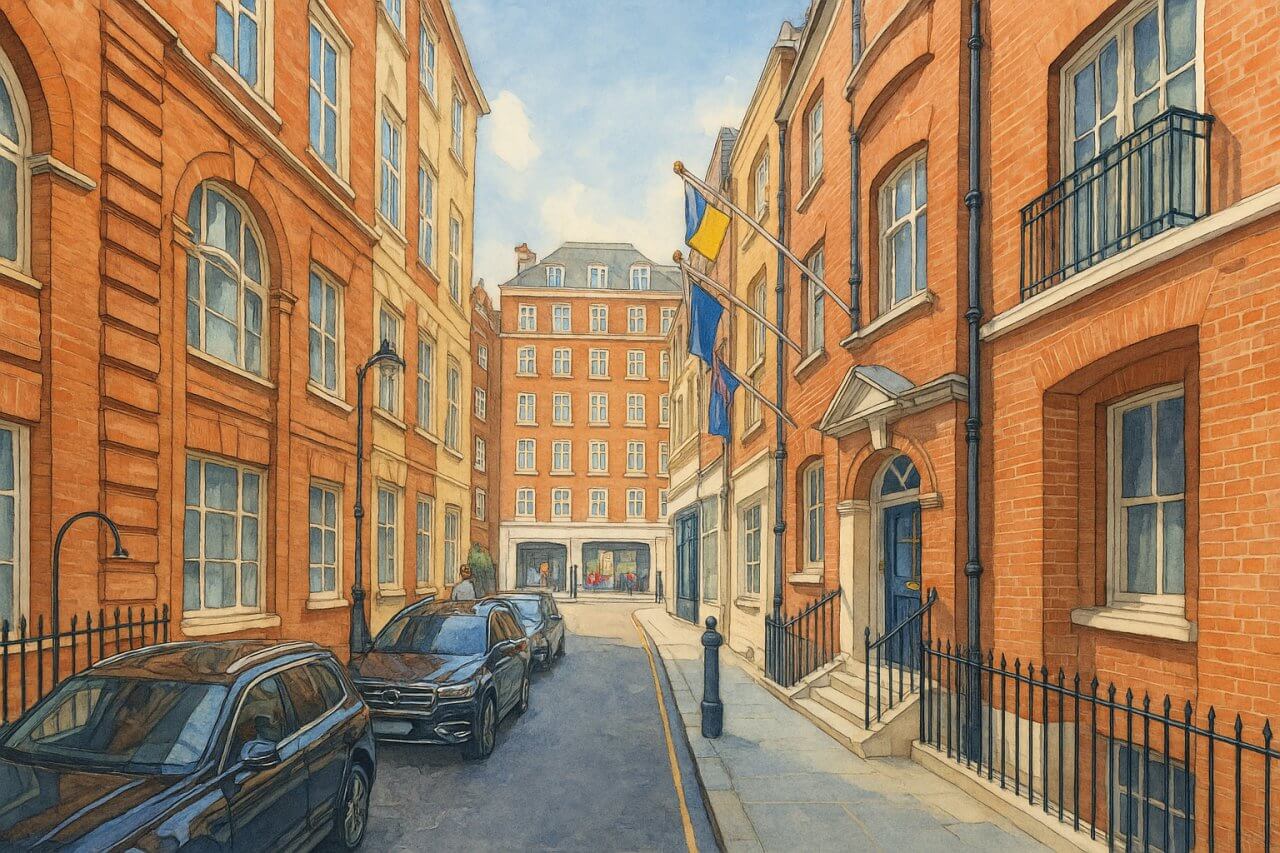
Dartmouth Street, London
Dartmouth Street, Westminster: A Historic Street Tucked Behind Parliament
Where is Dartmouth Street?
Dartmouth Street is a small but historically significant street in the heart of the City of Westminster, London.It connects Tothill Street at its southern end to Old Queen Street at its northern end and runs parallel to St James’s Park.
Located just a short walk from the Houses of Parliament, the street lies within the political centre of the United Kingdom, surrounded by important government buildings and ministries.
Length and Layout
Dartmouth Street is a short street, measuring approximately 150 metres in length. Despite its small size, it provides an important link between Tothill Street and Old Queen Street and serves as a quieter alternative to some of the busier nearby thoroughfares.History of Dartmouth Street
Dartmouth Street dates back to the early 18th century and was developed during a period when Westminster was rapidly expanding to accommodate London’s growing political and administrative needs.The area surrounding the street, including nearby Queen Anne’s Gate and Old Queen Street, became fashionable residential zones for people working in or around Parliament.
Origin of the Name
Dartmouth Street is believed to be named after the Earl of Dartmouth, a title in the peerage of Great Britain.The naming likely took place in the 18th century when it was common practice to name streets after aristocratic patrons or landowners.
The Earls of Dartmouth were associated with political life and had ties to the Westminster area during that period.
Connecting Streets
Dartmouth Street connects:- Tothill Street to the south
- Old Queen Street to the north
Notable Buildings and Sights
One of the most prominent buildings on Dartmouth Street is Church House, a large, Grade II listed building that serves as the headquarters of the Church of England.Church House Conference Centre, part of the complex, hosts international meetings, corporate events, and public conferences. Its elegant architecture and proximity to Parliament make it a popular venue.
Also nearby is St James’s Park, one of London’s oldest royal parks, located just across Storey’s Gate. While technically not on Dartmouth Street itself, it is visible and easily accessed from its northern end.
Street Character
Dartmouth Street is primarily institutional and administrative in character, hosting government-related offices and religious headquarters.There are no shops or residential blocks along the street, making it quiet and reserved in comparison to surrounding roads.
Its traffic is largely limited to official vehicles, deliveries, and pedestrians heading to nearby landmarks.
Nearest Underground Stations
The closest London Underground stations to Dartmouth Street are:- St James’s Park Station – served by the District and Circle lines
- Westminster Station – served by the District, Circle, and Jubilee lines
Fun Fact
Church House on Dartmouth Street was used as a meeting place for the House of Lords during World War II when the Palace of Westminster was damaged by bombing.This little street thus played a role in maintaining British parliamentary continuity during the Blitz.
Quick Facts
- Location: City of Westminster, Central London
- Length: Approx. 150 metres
- Connects: Tothill Street to Old Queen Street
- Notable Building: Church House, HQ of the Church of England
- Nearest Tube Stations: St James’s Park (District & Circle), Westminster (Jubilee, District & Circle)
- Character: Institutional and administrative
- Fun Fact: Hosted the House of Lords during WWII bomb damage
Map of Dartmouth Street, London

Painting of Dartmouth Street, London